Animals
Musical Horse
Submitted by my old high-school pal Sherry Mowbray.
Posted By: Paul - Wed Feb 13, 2013 -
Comments (3)
Category: Animals, Music, Reader Recommendation, Natural Wonders
Rinse Cycle Hard on Cats
This cataclysmic catastrophe was caused by a roommate leaving the laundry room. While getting some more laundry, Natasha the cat, who was always curious about the washer, jumped in.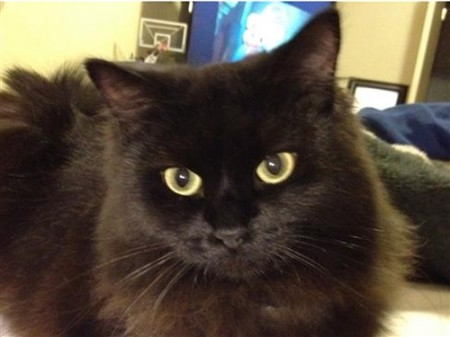
Thirty-five minutes later, a completely clean cat emerged. Treated for hypothermia and shock, this is not the weirdest insurance claim of the 80,000 submitted in December to a popular pet insurance company.
Here are two other award-winning claims paid by the company.
"The VPI Hambone Award is named in honor of a VPI-insured dog that got stuck in a refrigerator and ate an entire Thanksgiving ham while waiting for someone to rescue him.
The dog was eventually found, with a licked-clean ham bone and a mild case of hypothermia. This quirky title was first awarded in 2009 to "Lulu," a hungry English bulldog who swallowed 15 baby pacifiers, a bottle cap and a piece of a basketball."
Complete details here:
http://www.nbcbayarea.com/news/local/Oakland-Cat-Stuck-in-Laundry-Washer-Wins-Award-189882231.html
Natasha got another honor from the vet -- "The most pleasant smelling pet treated ever treated."
Posted By: gdanea - Mon Feb 11, 2013 -
Comments (4)
Category: Animals
Deer thinks it’s a sheep
The UK's National Trust Charity explains:
Posted By: Alex - Mon Feb 04, 2013 -
Comments (4)
Category: Animals
Cabbit
Cabbit from PROSPEKT on Vimeo.
Visit the home page.
Posted By: Paul - Fri Feb 01, 2013 -
Comments (2)
Category: Animals, Anthropomorphism, Technology, Urban Life, Surrealism, Reader Recommendation, Cartoons
Man Killed by Van Driven by Dog
Don't stop to open the gate with a dog close by. It may jump in and punch the accelerator.Here's the link:
http://usnews.nbcnews.com/_news/2013/01/17/16563704-florida-man-run-over-killed-after-dog-pushes-vehicles-accelerator?lite
Pictured is a trained driving dog. This is not the dog mentioned in the story.
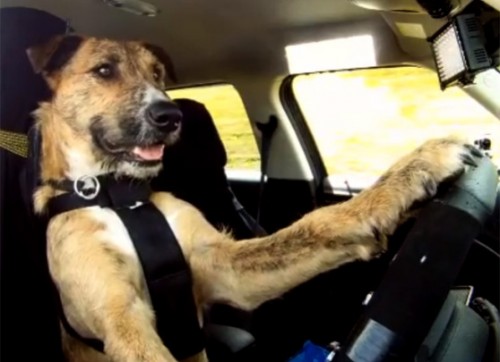
The driver, who had opened her door and let the dog in the van, has not been charged
"Lassie -- go get help!!" But first take your paw off the gas.
Posted By: gdanea - Tue Jan 22, 2013 -
Comments (2)
Category: Animals
Soap-Pooping Pigeons
GeoBeatsNews reports on an experimental London-based project to feed pigeons a special diet that'll make them poop soap. That way, instead of dirtying the city as they fly around, they'll clean it.The video makes it sound like this is an official government-sponsored project. But as far as I can tell, it's an art project called "Pigeon D'Or" by Cohen Van Balen. That is, it's probably not really happening. Van Balen offers this description of the project:
Posted By: Alex - Tue Jan 22, 2013 -
Comments (4)
Category: Animals, Art, Baths, Showers and Other Cleansing Methods, Excrement
Win an Elephant
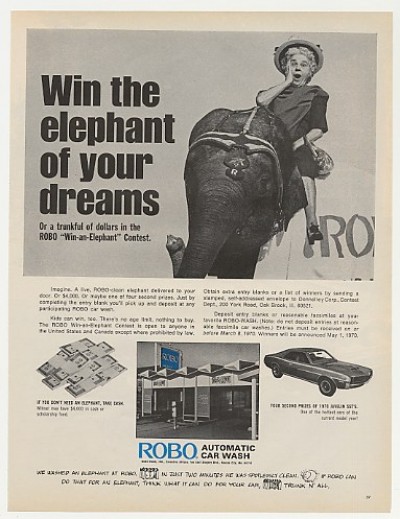
Remember when Bart Simpson won a radio contest and had to choose between a live elephant and lots of cash--and he chose the elephant?
I wonder if that happened back in 1970, when this contest ran?
I wish I could find a better scan to read the fine print. But the first sentence seems to promise the winner a real beast if desired.
Posted By: Paul - Thu Jan 17, 2013 -
Comments (15)
Category: Animals, Awards, Prizes, Competitions and Contests, Television, Cartoons, 1970s
Ozo
This one deserves to be watched in fullscreen mode.
Posted By: Paul - Fri Jan 04, 2013 -
Comments (4)
Category: Animals, Cryptozoology, Family, Babies and Toddlers, Parents, Cartoons
Rat-Killing Lessons, 1907
Back in the day, students were taught the important subjects at school, such as how to kill rats. Here's a description of rat-killing lessons at the Farm and Trade School on Thompson's Island, circa 1907. From Rats and Rat Riddance (1914), by Edward Howe Forbrush:The pictures show the schoolboys showing off their kill, as well as the rats strung up.
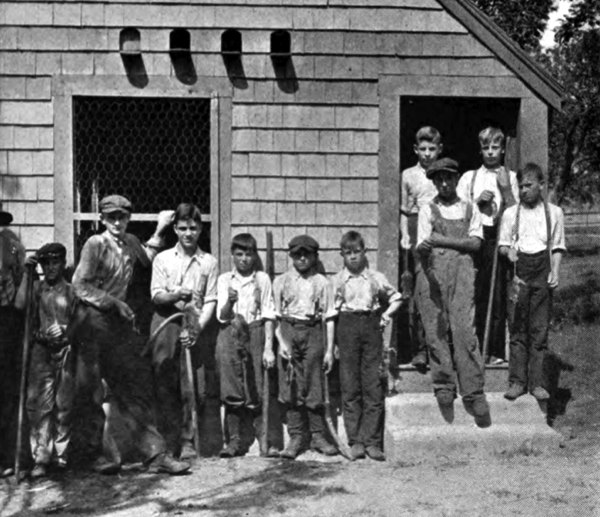
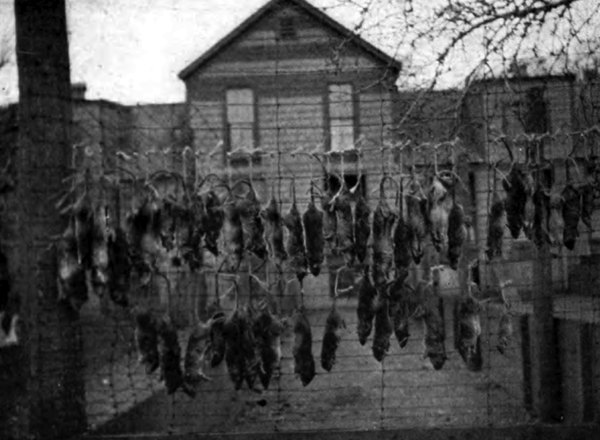
Posted By: Alex - Mon Dec 31, 2012 -
Comments (6)
Category: Animals, School, 1900s
The Frogs’ Bollocks
The Frogs' Bollocks and Other Assorted Bollocks from Stephen Ong on Vimeo.
Safe for Work? Of course! It's like an episode of PBS's Nature.
Posted By: Paul - Thu Dec 27, 2012 -
Comments (5)
Category: Animals, Cartoons, Genitals

| Who We Are |
|---|
| Alex Boese Alex is the creator and curator of the Museum of Hoaxes. He's also the author of various weird, non-fiction, science-themed books such as Elephants on Acid and Psychedelic Apes. Paul Di Filippo Paul has been paid to put weird ideas into fictional form for over thirty years, in his career as a noted science fiction writer. He has recently begun blogging on many curious topics with three fellow writers at The Inferior 4+1. Contact Us |




